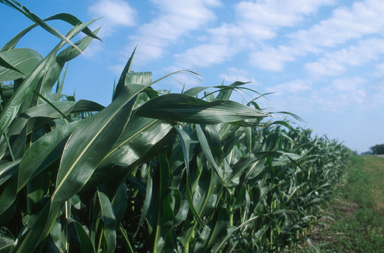
Agricultural News
CropLife America Sets the Record Straight on "Dirty Dozen" Report
Wed, 15 Jun 2011 10:24:01 CDT
 Crop protection products not only play an important role in providing an abundant and affordable food supply, but are also rigorously tested and regulated by government agencies to ensure the safety of consumers. CropLife America (CLA), whose members represent the developers, manufacturers, formulators and distributors of crop protection products, remind the public of these important facts upon the Environmental Working Group's (EWG) release of the annual "Dirty Dozen" report. The EWG continues to needlessly incite consumer concerns regarding food safety based on their review of the data presented in the U.S. Department of Agriculture (USDA) Pesticide Data Program (PDP) report. The review uses an unscientific method that misrepresents the report's findings. CLA stresses that crop protection products are all thoroughly and repeatedly reviewed for safety, and the mere detection of residues does not indicate harm or that the residue is above the allowable level.
Crop protection products not only play an important role in providing an abundant and affordable food supply, but are also rigorously tested and regulated by government agencies to ensure the safety of consumers. CropLife America (CLA), whose members represent the developers, manufacturers, formulators and distributors of crop protection products, remind the public of these important facts upon the Environmental Working Group's (EWG) release of the annual "Dirty Dozen" report. The EWG continues to needlessly incite consumer concerns regarding food safety based on their review of the data presented in the U.S. Department of Agriculture (USDA) Pesticide Data Program (PDP) report. The review uses an unscientific method that misrepresents the report's findings. CLA stresses that crop protection products are all thoroughly and repeatedly reviewed for safety, and the mere detection of residues does not indicate harm or that the residue is above the allowable level.
"The Environmental Working Group mistakes the mere presence of pesticide residue for risk, which only promotes a misguided agenda that scares and misleads consumers," said Jay Vroom, president and CEO of CLA. "Modern agricultural technologies are important tools for today's farmers and ranchers, and the regulatory framework surrounding crop protection products safeguard human and environmental health to ensure the country's fruits and vegetables are safe for consumption."
USDA's most recent PDP report shows that in 2009 an overwhelming 97 percent of the samples tested for pesticide residues were within legal allowable limits for all of the pesticides tested. Furthermore, approximately 43 percent of the 11,811 food samples had no detectable residues whatsoever. Residue levels for fresh produce are regulated by the U.S. Environmental Protection Agency (EPA) and are based on the potential risks to human health posed by specific pesticides. These established tolerance levels are developed with consideration to all of the different crops on which a product is used; the proportion of each crop likely to be treated; the amount likely to be used; how long after treatment the crop is harvested; how the food is prepared and eaten, and a number of other factors. These tolerance levels are developed for both domestically produced and imported food, and enforced by the Food & Drug Administration, state enforcement agencies and the USDA. Despite what EWG's report implies, EPA's risk assessment process ensures that the crop protection products used to produce the nation's food are protective of human health and the environment.
The misinformation presented in the EWG's report should not dissuade consumers from eating fresh fruits and vegetables. Fresh produce is an integral part of a healthy diet as reflected in USDA's new Food Plate and revised dietary guidelines, which include more fruits and vegetables. A healthy diet with fruits and vegetables has been shown to be rich in vitamins, and help fight cancer and other diseases. Modern agriculture helps to make our favorite produce available year-round at low prices.
The "Dirty Dozen" report continues to promote a skewed view of crop protection products and their use on the country's crops. Risk assessments conducted by the EPA effectively protect human health, and the pesticide residues permitted by U.S. government safety standards are regulated to levels that are considered safe based on average daily consumption by adults and children.
Click here for additional information on the safety of crop protection products and produce.
WebReadyTM Powered by WireReady® NSI
Top Agricultural News
More Headlines...



















